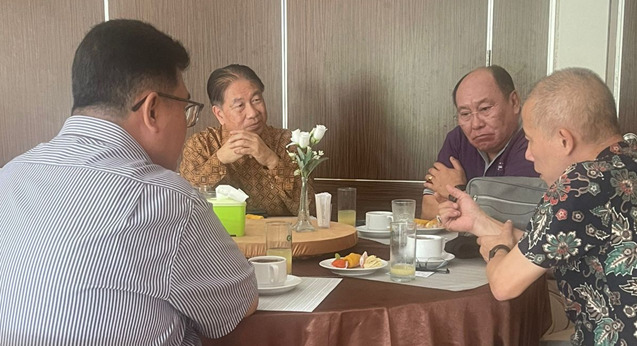PT Great Giant Pineapple (GGP), Terbanggi Besar, Central Lampung, welcomed the visiting team of PT Bukit Muria Jaya (BMJ) West Karawang, Friday (25/8).
The arrival of BMJ as a cigarette paper industry company at GGP aims to explore cooperation in developing fiber from banana trees (gedebok, ed) as an innovative product that is being planned and will be developed. The arrival of BMJ management representatives was warmly received by the Director of External Affairs Welly Soegiono accompanied by Corporate Affairs Lampung Subdiv Head Hendri Tanujaya in the Dining Room Training Center of Great Giant Foods (GGF).
In his explanation, David Gunawan as Government & External Relations Manager of BMJ explained that almost every part of the banana tree can be used, starting from the stem, tuber, skin, leaves and heart of the banana. “As science and technology develop, people are starting to innovate by using waste from banana trees for various purposes. “The waste from banana stems can add economic value by being processed into paper making materials,” said David.
Banana stem fiber or banana stems are very suitable to be used as raw material for making paper because they are easy to obtain and easy to make. The paper produced also varies according to texture and thickness which is balanced with the needs of the paper, he added.
He added that the technology used to make paper from banana stems is quite simple, because it only requires a knife, scissors, blender, rolling pin (wooden roller), table (a surface with a clean cloth can be used) and clear plastic. “Banana stems are of course very easy to obtain raw materials. “Banana stems with a thickness of 3cm have a diameter of between 17 and 25cm, and the water can be processed to make paper,” he said.
Meanwhile, Welly Soegiono, explained that banana stems (ares, ed.) are still used as additional animal feed, in this case fattening beef cattle. “What has been done, especially at the Pisang Mas partnership farmers in Tanggamus, is that banana areas are used for additional feed conversion for the beef cattle fattening program. “And the results are quite good, being able to increase the weight of cows,” he explained.
“What if there is a banana stem that has pesticides applied to it, isn’t it dangerous if it is processed into cigarette paper?” Hendri asked during the conversation. In response to this question, David answered that after becoming an innovative product, in this case cigarette paper is of course safe, because there is a process of processing the raw material starting from drying and cleaning until it actually becomes a product that is safe to use.
At the end of the visit, the group had the opportunity to inspect a stretch of banana plantation located in the Estate Plantation Group 1 garden. The overview thoroughly explored all aspects of the plantation, from plant maintenance techniques to sustainable management of natural resources

